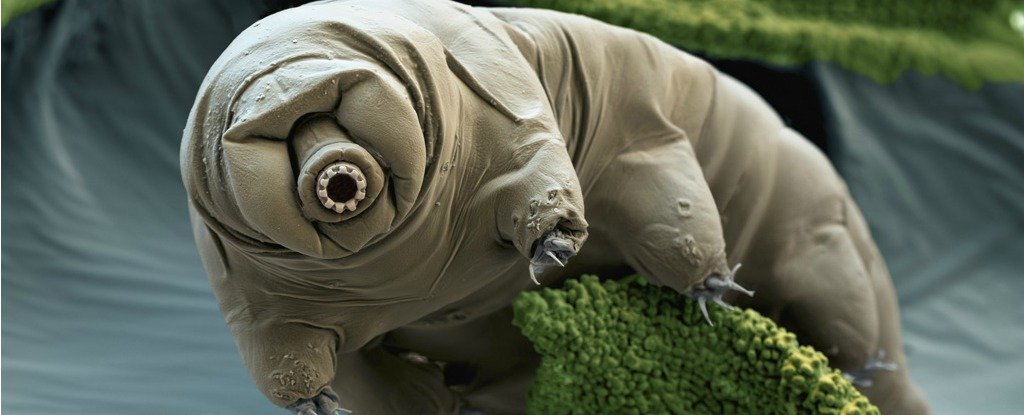World’s Toughest Animal has a Huge Amount—17.5%—of Foreign DNA

For the first time, scientists at the University of North Carolina have sequenced the entire genome of the tardigrades or water bears —the most robust animals capable of withstanding the harshest environments on the planet, and even outer space. According to research published in the Proceedings of the National Academy of Sciences, the eight-legged microscopic worm-like animals have genomes that are nearly one-sixth foreign, which means that they get a massive chunk of their DNA from other creatures.
A team sequenced the genome of a tardigrade species Hypsibius dujardini to try to understand how it is that some animals can survive some really extreme conditions. Researchers discovered that Hypsibius dujardini, who can live for more than 10 years without food or water, has acquired about 6,000 foreign genes throughout its history. Through a process known as horizontal gene transfer, in which genetic material is transferred directly between organisms instead of being passed down from parent to offspring, foreign genes of the Hypsibius dujardini came mainly from bacteria but also from fungi, plants, and Archaea.
https://twitter.com/reactorcontrol/status/670252041374142465
Lead author Thomas Boothby from the University of North Carolina told IFLScience:
“On a broader scientific scale, this shows us the animal genome can be composed of a much higher proportion of foreign genes than was originally thought possible, or probable. It also shows we should think of the ‘tree of life’ as a ‘web of life,’ where you have disparate organisms contributing genetic material to distantly related organisms, not just direct ancestors.”
“We had no idea that an animal genome could be composed of so much foreign DNA. We knew many animals acquire foreign genes, but we had no idea that it happens to this degree,” said Bob Goldstein, co-author of the study.
But how exactly does the tardigrade get foreign DNA? Since the tardigrade can completely dry out in drought conditions, its DNA breaks into fragments, and the cell membrane becomes temporarily leaky as it rehydrates. Boothby says this allows big molecules like proteins and fragments of foreign DNA to pass in and out of the cell, after which the fragmented DNA repairs itself.
UPDATE: A team of scientists at the University of Edinburgh later sequenced the genome of the same species of tardigrades purchased from the same supplier, and found at most 500 genes to have come from other species.
The Atlantic reports:
They found very few horizontally transferred genes—as few as 36, and just 500 at the very most. They concluded that their rivals had sequenced DNA from bacteria that were living alongside the tardigrades and, despite their best efforts, had mistaken the genes of those microbes for genuine tardigrade genes.
They ended up with around 500 genes that potentially came from microbes, and they still think that the most of these are from contaminants that they haven’t been able to sort through yet. They only have strong evidence for 36 genes being horizontally transferred from bacteria, which is within the common range for animal genomes.
https://twitter.com/atonal440/status/672874766924165121
While there is no denying that further research is needed to confirm just how foreign the water bear's genome really is. Since the first study was performed on only one species, it cannot be concluded that all species of Tardigrade exhibit the same characteristics – we believe it is a step in the right direction. What do you think? Please share your thoughts below.
The particulars of the discussion are above my pay grade, but I note that the discussion is being undertaken far more quickly than has been possible prior to the present rate of diffusion of scientific papers, and this is an enormously good thing.
Also, Moss Piglets are cool. The extremity of conditions they can simply take in stride does indicate some unique DNA, and that such a complex lifeform can undertake such extremity is not only amazing, but encouraging that science will soon enable improved human felicity.
Whether implementation of such potential results in improved felicity will reveal the suitability of extant institutional purpose and execution to our felicity, and this may be far more important than the source(s) of Waterbear DNA to us.
The present swift discussion of important papers is more exciting than even Tardigrades themselves, and that's saying a lot, given just how wondrous these animalcules are.
Thanks!